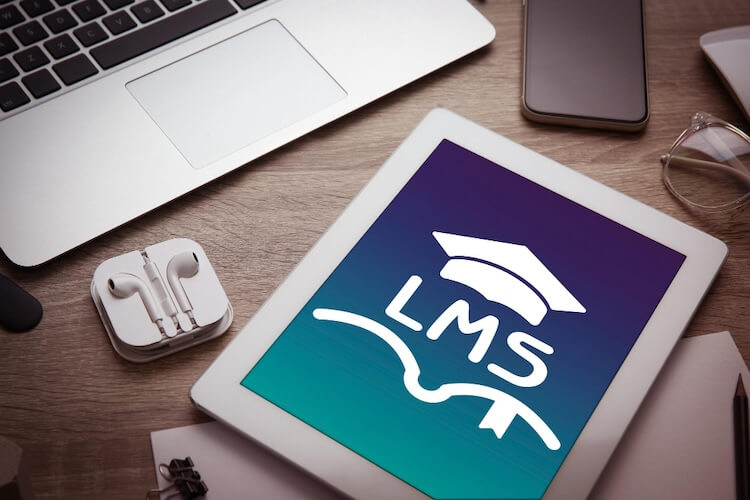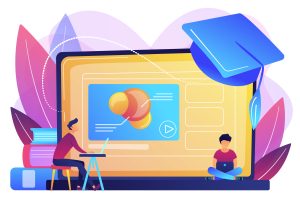What is an LMS and Why is LMS Implementation Important?
Definition of LMS
LMS (Learning Management System) is a software solution designed to manage, document, track, report and deliver learning content. It provides a centralized platform for training employees, partners or customers, which helps to increase the efficiency and consistency of learning processes.
Key Benefits of LMS for Organizations
- Centralization of learning: All learning content is available in one place, making it easier to manage and access.
- Progress tracking: Possibility to monitor participants' performance and adjust learning paths.
- Flexibility: Learning can be tailored to individual needs and pace.
- Cost reduction: Digital education reduces the need for physical classrooms and printed materials.

LMS Implementation Requires Preparation
Determining Learning Goals and Needs
Before you begin your implementation, it's crucial to define what you want to achieve with your LMS. Is it improving the onboarding process, increasing compliance, or developing employee competencies? Clearly defined goals will guide the entire implementation process.
Involving Key Stakeholders
Successful LMS implementation requires collaboration across multiple departments: IT, HR, management, and end users. Early engagement of these stakeholders ensures a better understanding of needs and greater support for the project.
Choosing the Right LMS for Your Organization
When choosing an LMS, consider the following factors:
- Functionalities: Does the system support necessary features such as mobile access, integrations with existing systems and reporting?
- User experience: Is the interface intuitive and easy to use?
- Support and security: Does the provider offer reliable support and ensure data security?
Common Challenges and How to Overcome Them
Successful LMS implementation requires more than just technical implementation; effective change management and ensuring a high level of user acceptance are also crucial. Changes are often met with resistance from employees, especially when they involve new technologies. Open and transparent communication about the reasons for the change and the benefits of implementing an LMS is key to reducing this resistance.
Involving employees in the implementation process, for example through workshops or feedback, increases their engagement and sense of ownership of the change. From a technical perspective, it is also important to collaborate with the IT team and the LMS provider to ensure that the LMS implementation is carried out effectively.

Steps for Successful LMS Implementation
Planning and Deployment Strategy
Develop a detailed implementation plan that includes a timeline, responsibilities, and key milestones. This will help keep the project on track and allow for early identification of potential issues.
Data Preparation and Migration
Data migration is one of the trickiest parts of any LMS implementation process. Moving data from your existing system into the new LMS can present a number of challenges, including compatibility issues, data loss, and integration difficulties. Before starting, the LMS implementation team should develop a comprehensive migration strategy. This strategy should include mapping out how the data will be transferred, what types of data need to be migrated (e.g., course completion records, user profiles, training history), and how to test for data accuracy post-migration.
Integration with Existing Systems
Connect your LMS to other systems such as HRM, CRM or payroll systems to ensure smooth information flow and process automation.
Testing and Pilot Deployment
Before full implementation, test the system with a selected group of users. This allows you to identify potential problems and adjust the system before wider use.
User Training and Support
Provide adequate training for all LMS users. Prepare guides, video tutorials, and organize workshops to familiarize users with the system and its functionalities.
Implementation Performance Measurement
To effectively assess the success of a learning management system (LMS) implementation, key monitoring of certain performance indicators (KPI) and regular collection of feedback users. Important KPIs include course completion rates, user satisfaction, and competency improvement.
Regular feedback collection enables the identification of areas for improvement and adjustment of the content and functionality of the system. This ensures continuous improvement and updating of the LMS, which contributes to greater efficiency of the learning process and user satisfaction.
Thoughtful Planning Is Required
LMS implementation is not a one-time project, but a dynamic process that requires thoughtful planning, active stakeholder involvement and continuous adaptation
With clear defined goals, appropriate performance indicators and open communication organizations can ensure that the LMS is effective supported their learning and development needs. By constantly monitoring results and adjusting the content and functionality of the system, user engagement and reach increase. sustainable impact on organizational learning.





